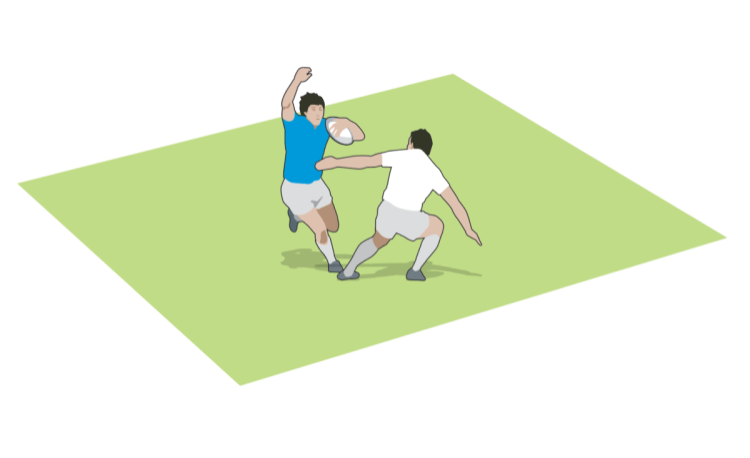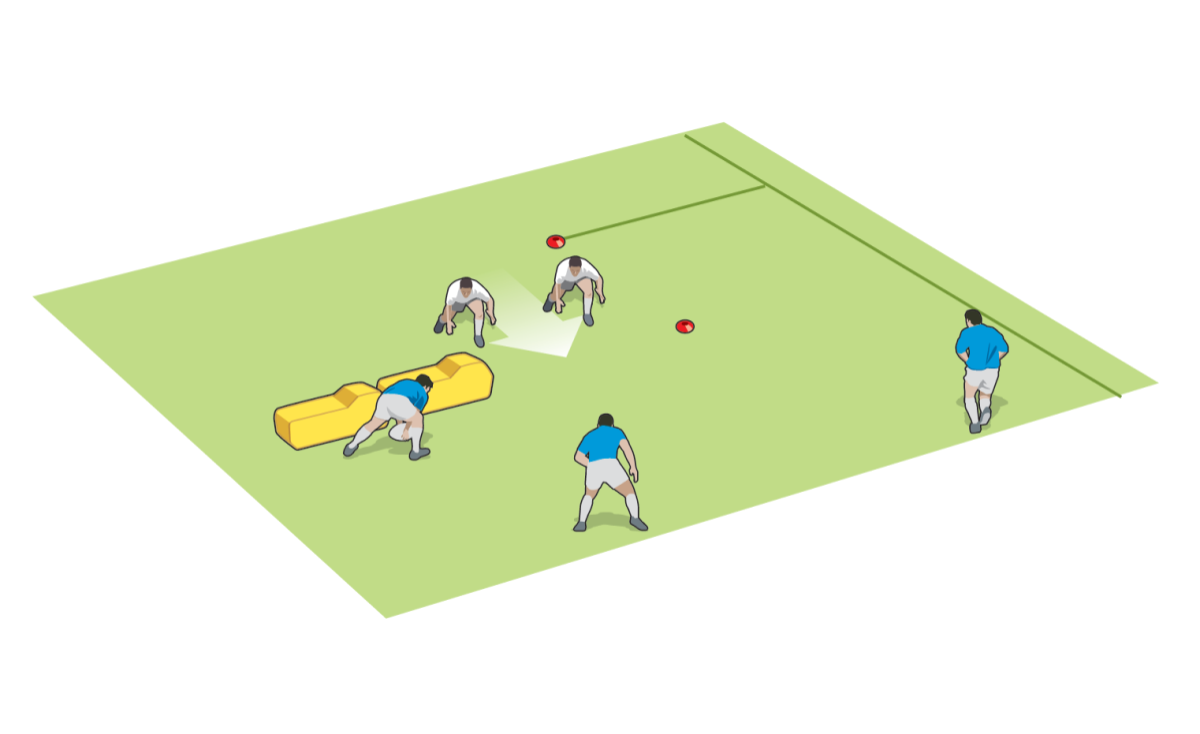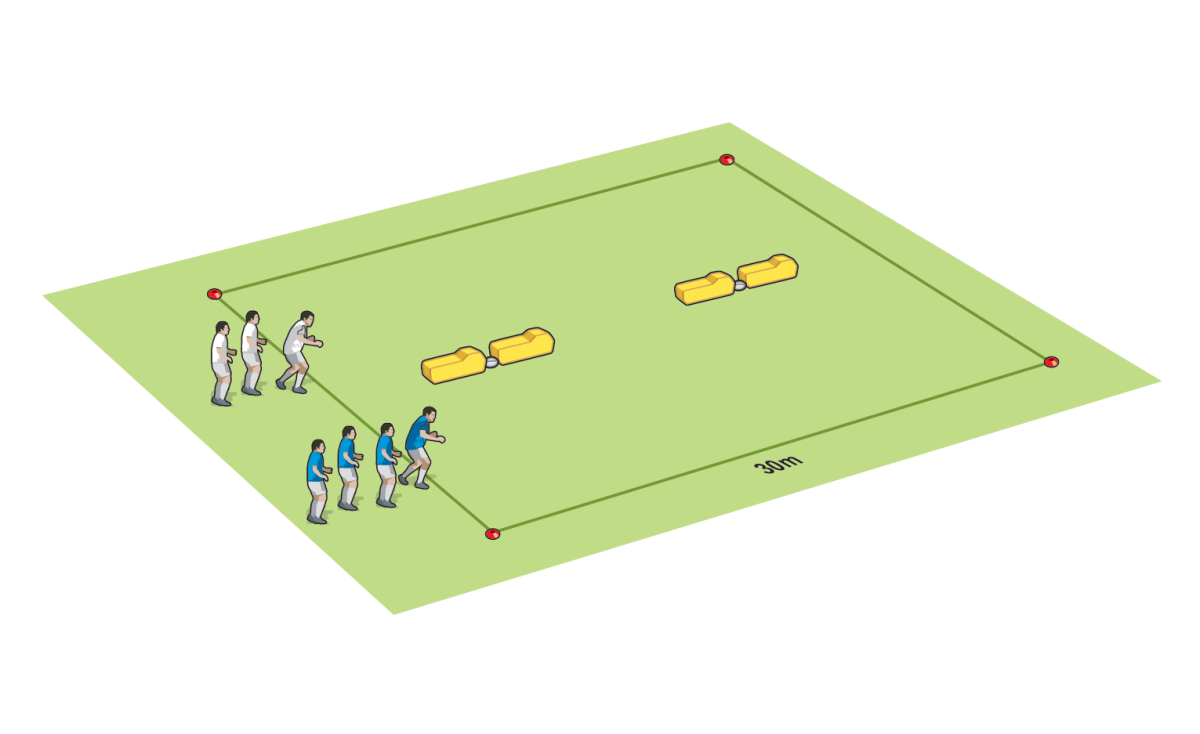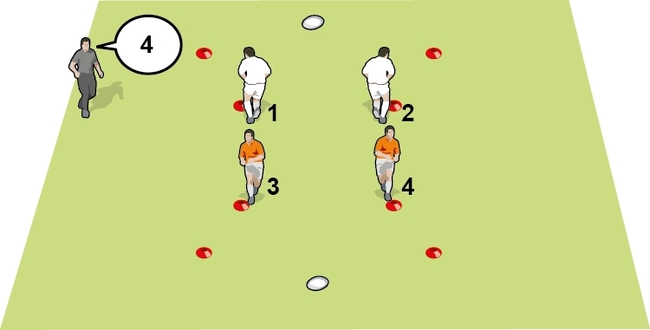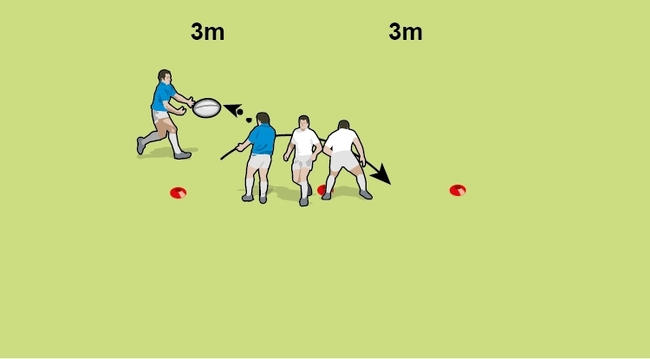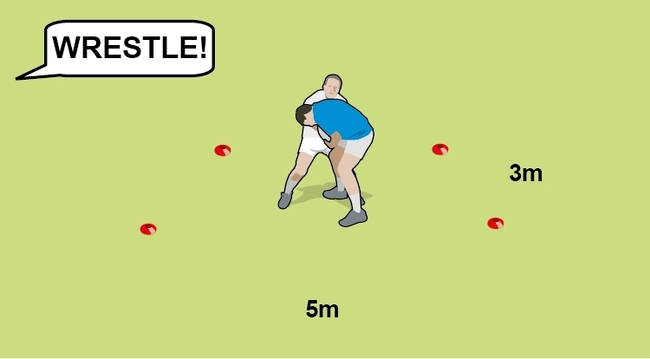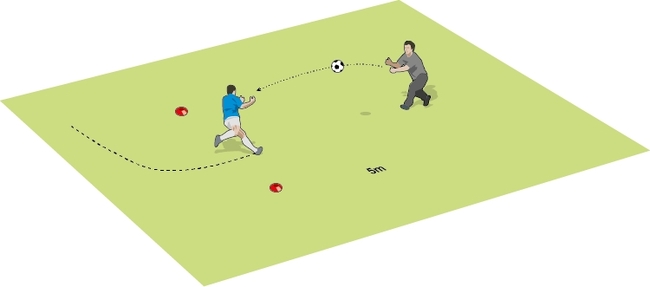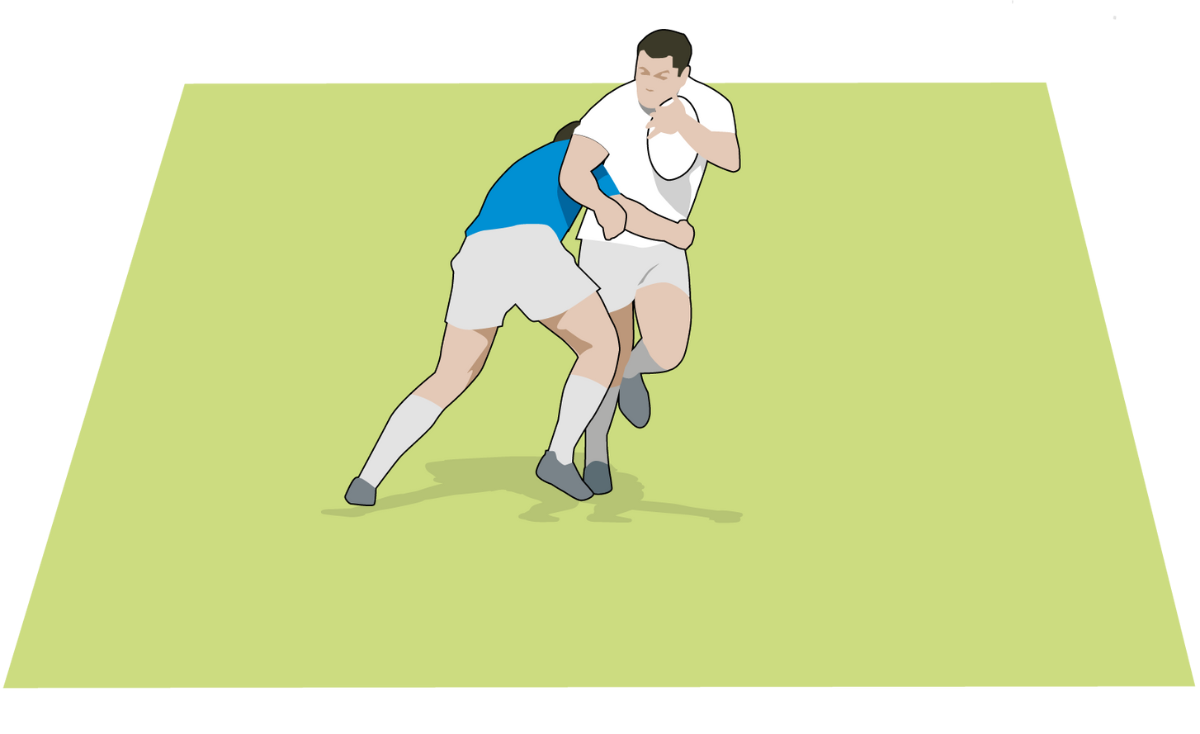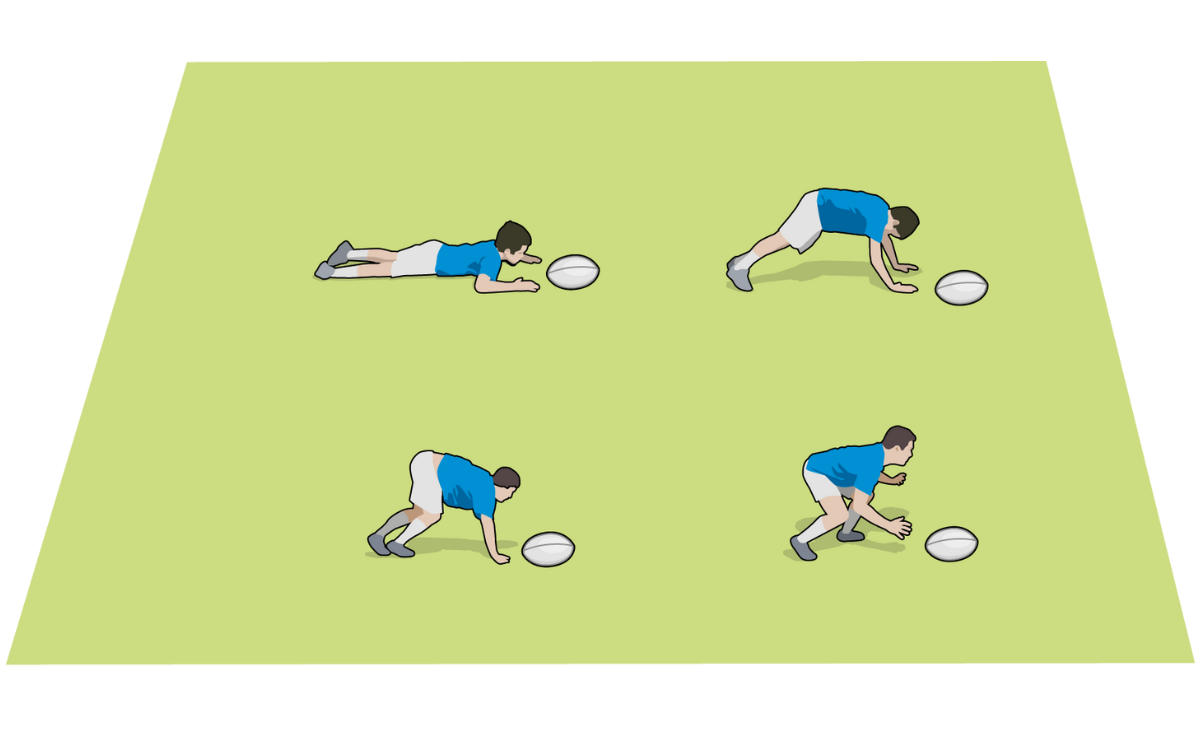The B defender blitz
This activity focuses on the role of the second player out from the side of a ruck, a key job requiring good vision and decision-making. By DAN COTTRELL.
WHY USE IT
The player protects against the 9 running and, if the 9 passes, closing down the space inside the 10. It is a key role, requiring good vision and decision-making.
set up
Two ruck pads, two cones, one ball; then a 30m by 20m box with four ruck pads.
HOW TO PLAY
ACTIVITY: Set up two ruck pads and a ball as in the top illustration. They should be no more than 10m from a touchline. Mark out a gain line and another line which will be an acceptable distance to allow the first receiver to run (given that the B defender will have to move up and out). Put two defenders in the A and B positions beside a ruck. Have a 9, inside player and first receiver, who try to beat the ruck defence. Ideally, use full tackling – if not, then count two hands on the front of the chest as a tackle.
GAME SITUATION: Set up two sets of ruck pads, with a ball between each set. Indicate which ‘ruck’ to work from. The attack and defence line up. Shout out when the ball is live. Play live tackling but don’t go beyond one phase. The attack can’t go outside the other ruck pads in attack.
COACHING POINTS
- Make sure the first ruck defender is in place before setting up as the B defender.
- Be dynamic and on your toes, ready to move forward and take on the 9 or move out to mark inside the first receiver.
- Put two defenders marking the side of the pads
- Put a 9 behind two ruck pads
- Mark out an ‘acceptable’ gain line for the defence to try to stop the attack should they go for the outside
- Put a support player in the slightly wider channel
- Put a runner behind the 9
Related Files
-
The 9 attacks, either with a pass-pop-run or run-and-pass
-
Three defenders run to the ruck pads indicated and cover both sides
- The attackers run to the ruck pads indicated and set off when they want
- Play live tackling, but don’t go beyond one phase
Newsletter Sign Up
Coaches Testimonials

Gerald Kearney, Downtown Las Vegas Soccer Club

Paul Butler, Florida, USA

Rick Shields, Springboro, USA

Tony Green, Pierrefonds Titans, Quebec, Canada
Subscribe Today
Be a more effective, more successful rugby coach
In a recent survey 89% of subscribers said Rugby Coach Weekly makes them more confident, 91% said Rugby Coach Weekly makes them a more effective coach and 93% said Rugby Coach Weekly makes them more inspired.
Get Weekly Inspiration
All the latest techniques and approaches
Rugby Coach Weekly offers proven and easy to use rugby drills, coaching sessions, practice plans, small-sided games, warm-ups, training tips and advice.
We've been at the cutting edge of rugby coaching since we launched in 2005, creating resources for the grassroots youth coach, following best practice from around the world and insights from the professional game.

